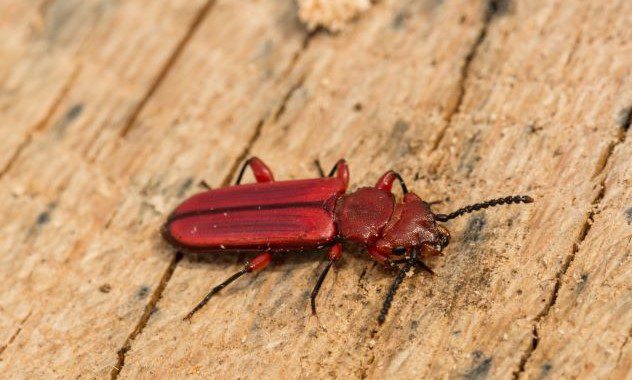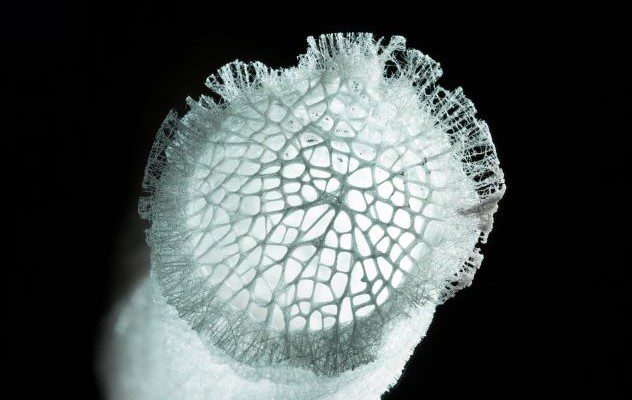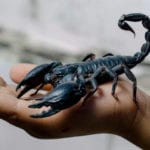 Crime
Crime  Crime
Crime  Technology
Technology 10 Hilariously Over-Engineered Solutions to Simple Problems
 Miscellaneous
Miscellaneous 10 Ironic News Stories Straight out of an Alanis Morissette Song
 Politics
Politics 10 Lesser-Known Far-Right Groups of the 21st Century
 History
History Ten Revealing Facts about Daily Domestic Life in the Old West
 Weird Stuff
Weird Stuff 10 Everyday Products Surprisingly Made by Inmates
 Movies and TV
Movies and TV 10 Actors Dragged out of Retirement for One Key Role
 Creepy
Creepy 10 Lesser-Known Shapeshifter Legends from Around the World
 Animals
Animals 10 Amazing Animal Tales from the Ancient World
 Gaming
Gaming 10 Game Characters Everyone Hated Playing
 Crime
Crime 10 Terrifying Serial Killers from Centuries Ago
 Technology
Technology 10 Hilariously Over-Engineered Solutions to Simple Problems
 Miscellaneous
Miscellaneous 10 Ironic News Stories Straight out of an Alanis Morissette Song
Who's Behind Listverse?

Jamie Frater
Head Editor
Jamie founded Listverse due to an insatiable desire to share fascinating, obscure, and bizarre facts. He has been a guest speaker on numerous national radio and television stations and is a five time published author.
More About Us Politics
Politics 10 Lesser-Known Far-Right Groups of the 21st Century
 History
History Ten Revealing Facts about Daily Domestic Life in the Old West
 Weird Stuff
Weird Stuff 10 Everyday Products Surprisingly Made by Inmates
 Movies and TV
Movies and TV 10 Actors Dragged out of Retirement for One Key Role
 Creepy
Creepy 10 Lesser-Known Shapeshifter Legends from Around the World
 Animals
Animals 10 Amazing Animal Tales from the Ancient World
 Gaming
Gaming 10 Game Characters Everyone Hated Playing
10 Animals That Could Actually Survive the Apocalypse
Twinkies, it is said, could survive the apocalypse. The non-natural filling chock full of chemicals could supposedly withstand even the worst nuclear winter. Whether that’s actually true or not doesn’t much matter—by now, the Twinkie meme is all over the place. Perhaps it should make us more hesitant to eat them so often, then. Or maybe it should get us to eat even more Twinkies and fortify our insides with these apocalypse-resistant chemicals. (Okay, we’re not quite sure that’s actually how that works. But still!)
While post-apocalyptic foods may be funny to think about, post-apocalyptic animals are actually very real. Across the animal kingdom, creatures of all kinds and types have developed fascinating adaptations that allow them to be remarkably resilient and durable. If the apocalypse really does come, or if climate change or other issues fully engulf the earth, there are a few animals that could fare pretty well while the rest of us go the way of the dodo.
In this list, you’ll learn all about ten incredibly adaptable and hearty animals. Biologists believe these ten creatures could survive massive temperature swings, crazy weather phenomena, and other end-of-the-world events that would fell the rest of us in a heartbeat. So whenever the next meteor hits, or if nuclear warfare ever brings mankind to collapse, these ten living things should just go right on existing as they did before!
Related: 10 Strange Ways Insects Have Evolved To Survive
10 Triops
Triops—commonly known as tadpole or dinosaur shrimp—are tiny crustaceans found in nearly every corner of the world. The key to their apocalyptic survival rests on their remarkably tough little eggs. These eggs, which biologists refer to as cysts, have a durable exoskeleton that protects unborn triops from harm. The eggs have been shown to survive through unbelievable cold and heat, be it in desert-like environments or the freeze of the poles.
Biologists have even shot ionizing radiation at the eggs—and they carried on just like normal! And that’s not all: Other animals have been found with Triops eggs in their digestive tracts. But guess what? The eggs were completely unharmed. Birds even do triops a favor by eating the eggs, digesting them, and then scattering them in new areas. Thanks for the lift, fellas!
The eggs can also withstand these extreme environments for a remarkably long time. Scientists call this ability to survive in this suspended pre-hatching limbo “diapause.” And the diapause periods for Triops youth is a really long time. Some eggs have remained viable even after decades-long hatching delays. Then, when the eggs do finally hatch, newborn Triops can live in a lot of different pools, waters, and other wet environments.
The life cycle for a Triops isn’t particularly long on its own; the greatest longevity ever recorded by scientists has been a couple of months, with most of the crustaceans tapping out a bit before that. But the number of eggs, the hardiness of those eggs, and the incredible patience in their hatching have allowed the Triops to live for millions of years. Should the worst happen on earth, it’s likely they will live for millions more.[1]
9 Alaskan Wood Frog
It may be known as the Alaskan wood frog, but the tough little amphibians actually live across virtually all of North America. They have been spotted as far south as Alabama and across the entirety of the Midwest and Northeast.
However, their name is listed for a reason: These frogs are right at home in the far reaches of the Alaskan wilderness. In fact, Alaskan wood frogs are the only amphibian species that live out their lives north of the Arctic Circle. They do that because, as you probably guessed, they can withstand being frozen alive for months on end.
When it gets cold in the Arctic come wintertime, these frogs hunker down for the long haul ahead. More than two-thirds of their body goes into freeze mode and solidifies into an icy chunk. Their hearts stop beating, and the frogs stop breathing for months. They aren’t dead, though. They can actually survive like this for up to seven months at a time and in temperatures down to 0°F (-17.8°C). When the weather starts to warm a bit, their bodies then thaw out, and they slowly get back to life as they knew it before the dark season.
These frogs are adaptable like this because their bodies contain several kinds of naturally-occurring antifreeze. When winter comes, the frogs’ muscles channel glucose and a special carbohydrate compound called glycolipid. These substances pulse through the tiny tissues of their minuscule muscles and protect the frogs from the cold.
So staying frozen solid for months on end poses no problem for these little guys. Should nuclear winter usher in an inconceivable (to us) weather pattern, these Alaskan wood frogs won’t mind it one bit![2]
8 Hydra
Hydras are similar to sea anemones but live all over the world in freshwater ponds, streams, and rivers. They use their lengthy (well, relative to their body size) arms to catch food particles that pass through the water. Thus, those tiny waving limbs are critical to their survival.
But that’s okay as far as these hydras are concerned because if they lose a few, they can grow them right back! Yes, hydras are named after the Greek mythological monster which could regrow its lost heads—because these real-life creatures do exactly that when they need to survive an adverse situation.
Should a hydra ever lose a limb—or even a head—it can regenerate the material necessary and relatively quickly regrow the body parts. And if the growth alone isn’t enough to survive, any living hydra material can reform itself into an entirely new animal. That means that, for all intents and purposes, hydras are immortal.
All of their cells regenerate and are replaced within their body every three weeks. Because of that, hydras never show any signs of internal deterioration or aging. Instead, they simply renew themselves in time and keep on going just like they’ve always done.
Most of the cells within a hydra’s body are stem cells, and that accounts for their ability to infinitely regenerate. Unless they get eaten or squashed, any other adverse situation they face is simply an opportunity to begin anew and keep on living.
As far as scientists are concerned, they believe many of these creatures currently living out in the wild have been around for millions of years. And there are implications for this as far as mankind is concerned. Scientists continue to study hydra biology to figure out whether we could ever harness the uniqueness of their stem cell situation for ourselves.[3]
7 Red Flat Bark Beetle

If (or when) the apocalypse actually comes, insects are going to have the jump on us. There are literally quintillions of insects and bugs living all over the planet right now. So just from a sheer numbers perspective, a good deal of those creatures will survive whatever comes next. But even among that large population of creepy crawlers, there is one beetle very well positioned for the worst.
We’re talking about the red flat bark beetle, which lives in forests and tree-covered grounds all across the wilds of North America. These beetles can withstand incredibly cold and unimaginably low temperatures. Just like the aforementioned Alaskan wood frogs, red flat bark beetles can survive for months while being completely frozen.
And just like the Alaskan wood frogs, this ability goes back to a natural type of antifreeze that the beetle carries inside. Proteins within the beetle’s tissues make it so water molecules can’t ever group together. Their little bodies also contain significant amounts of glycerol, which effectively coats them in a warm layer of non-freezable molecules. And as temperatures fall every winter across North America, these beetles quickly dehydrate themselves so no internal water can freeze and kill them.
Here’s the craziest part: The temperatures at which they can survive are really, really, really low. We honestly don’t think we typed “really” enough times there. While the Alaskan wood frog may be able to survive quite a bit below the freezing line, red flat bark beetles can carry on in temps as low as -238°F (-150). That’s a wild number—and obviously way lower than anything we’ve ever seen in North America.
But it’s not too much for these beetles. If the temperature ever got that low, everything else around them would die. Then, when it came time to thaw out, these insects would have no competition for food and no worries regarding predators. The perfect situation![4]
6 Mariana Snailfish
Snailfish are bottom-dwellers that live all across the oceans. They have tiny, soft bodies with no scales. They look like a tadpole, sort of—but don’t let their not-so-intimidating looks fool you. Deep down in the Mariana Trench in the Atlantic Ocean, there lives a kind of snailfish that could survive nearly anything the world has to throw at it.
The Mariana snailfish makes its home in the deepest known place in the entire world. And so it makes sense that it can withstand incredible pressure from that far down, as well as a lack of sunlight and unimaginably cold water temperatures. They are exceptional in that way alone: Scientists say the Mariana snailfish is (at least, so far) the deepest-living fish ever discovered anywhere on Earth.
Their ability to withstand pressure allows these fish to dive down into crevices and cracks where predators cannot follow. There, they feed on sediment and food particles that have slowly funneled down onto the ocean floor from above. Because of that, they can stay indefinitely down in those crevices and have no natural predators. Of course, there aren’t that many things living on the ocean floor to begin with, but these snailfish are so tiny and flexible that they can hide out for as long as need be.
And these deep-sea snailfish have apocalyptic resistance in their genes—literally. Chinese researchers once discovered that snailfish can repair their own DNA and internally stabilize their essential proteins to ensure survival during tough times. Biologists believe these adaptations came about as a result of living under such immense water pressure miles below the surface.
Among those adjustments has been the loss of most of the snailfish’s sense of smell but a heightened ability to taste sour flavors. No one is quite sure why that’s the case. However, DNA modifications like this always point scientists to one conclusion. Snailfish are likely far hardier than virtually any other animal on Earth should the extremes of the apocalypse ever sweep over the land (and sea).[5]
5 Alligator
Alligators are well-known to anyone who has ever lived in or visited Florida. The American species is a cultural mainstay with all kinds of myths, legends, stories, and not less than a few news reports every year about the mayhem they can cause. The Chinese alligator is a bit smaller than the American one but equally as aggressive. And both kinds of alligators are particularly well-equipped for the ever-changing world.
That’s because they’ve seen it all before. Alligators (and crocodiles, for that matter) are remarkably similar to ancient dinosaurs in so many ways that biologists sometimes consider them to be living fossils. They haven’t changed a whole lot in a million years, and if given the opportunity, they may not change much more in the next few million.
Their hardy ways center on a few fascinating traits. For one, alligators can go up to three years without ever eating a single bite of food. They are portrayed as hungry and aggressive predators, and they can certainly be that, but there is more to the story. They have an absurdly slow metabolism which keeps them able to stay full for months or years on end in the toughest prey scenarios. Thus, when food is scarce, they effectively go into hibernation and can wait out a long, long, dry spell. Should an apocalypse of some kind ever come, these gators can hang out for quite a while and wait while other populations replenish themselves.
Alligators are also able to go for more than an hour without taking a breath. They can hang out underwater without breathing for over sixty minutes. That’s about as long as the average sea-going whale—despite alligators having significantly smaller lungs. And their blood allows them to live through virtually anything too. Alligators have a special type of hemoglobin in their blood which conserves oxygen at a far greater rate than nearly any other animal.
In adverse situations, alligators’ bodies intuitively know how to conserve blood and what part of the body to send oxygenated blood when in need. That fact is so unique that scientists have been studying alligators’ hemoglobin for medical use. The thought is that researchers might be able to create artificial human blood using those same molecular principles that could then be used by emergency room doctors for transfusions.[6]
4 Planaria Flatworm
Planarians are a common class of flatworm that live in nearly all regions of the world. They are highly adaptable and can thrive in both freshwater and seawater. They do just fine in rivers and streams, too—even surviving for long stretches on land. The most brightly colored ones are most common, and those seem to be particularly abundant in tropical regions. And like a few other creatures on this list, they can do the unthinkable: When they are chopped in two, planaria flatworms can regenerate their bodies and grow into a totally new being.
It doesn’t take long for planarians to revive themselves after severe injury, either. According to biologists, these flatworms can grow an entirely new head, eyes, and brain in less than a week. That’s in part because their brains are remarkably simple. The average human brain has about 86 billion neurons firing at any one time.
But the flatworm needs far less; these tiny creatures only have about 10,000 neurons running through their heads. So it’s relatively simple to regrow another brain and go right on with life as if nothing ever happened. It’s also why planarians are nearly impossible to force into extinction. After all, they are more adaptable and resilient than nearly any other creature on Earth.
As for the consequences of this regeneration, planarian flatworms could come up big when it comes to human medicine soon. Not only would their regenerative abilities be highly prized in the apocalypse, but they are also being studied by scientists in the present day.
Neuroscientists and brain experts are hopeful that learning more about the intricacies of planarian regeneration could help the human brain regenerate too. If we can learn how their heads and brains reform, the thought is that we could seriously help humans who suffer from debilitating traumatic brain injuries.[7]
3 Longhorn Beetle
The longhorn beetle, sometimes known to scientists as the longicorn, lives across Southeast Asia and the tropical, volcanic areas of the Pacific Rim. They enjoy being in those hot and humid environments, and they don’t mind warm temperatures. We don’t mean warm temperatures like 100°F (37.8°) or something humans would consider warm, either.
Longhorn beetles like it REALLY warm—far beyond what we could stand ourselves. During the summer, in some of these wet, warm inland tropical areas, the temperature routinely gets into the triple digits. The ground temperatures where these longhorn beetles live can soar above 150°F (65.6°), too, but it’s no problem at all.
The secret is in the beetle’s intricate and complicated shells. The structures of their exoskeletons allow the beetle to reflect sunlight and funnel air. Super-small patterns on the exoskeleton keep sunlight and heat from penetrating the shell. So no matter how hot it gets, these beetles never sweat it. And since they live in areas with active volcanoes, biologists have come to understand that these beetles aren’t thrown by being close to incredibly hot lava bubbling up from the earth.
The longhorn beetle is so tough on soaring temperatures that biologists are now trying to copy it. Recent research has moved to mimic the beetle’s shell pattern with the hopes that it could prevent overheating in everything from human health to building design to many more manmade ideas and structures.
Long-term, scientists hope these beetles’ fascinating shells could be the key to unlocking serious energy-saving techniques for the human world. Could their microscopic shell patterns be the crucial point that alters the pattern of climate change? Time will tell, but if it doesn’t, and the world keeps heating up, these longhorn beetles are going to live right on through it as if nothing were the matter.[8]
2 Antarctic Glass Sponge

Over time, every animal dies. Well, almost every animal. (Thinking of you here, dear hydra.) Another apocalypse-ready creature with a (nearly) immortal lifespan resides deep down in the depths of the coldest Antarctic seas. It’s the aptly named Antarctic glass sponge, and it has the tools necessary to survive pretty much anything that comes its way.
That’s because it’s already been through a lot. Each sponge can live for as long as 15,000 years. That makes them one of the longest-living creatures on the face of planet Earth, right alongside hydras and a few other super-old beings. For sponges, living in icy, cold waters allows them to grow very, very slowly. That growth translates to an unbelievably slow aging process that marches along in the slowest crawl you can imagine.
Their name ought to give you a hint about their makeup too. These sponges are actually made up of biogenic silica. That is, their outer structures really are made of a form of naturally occurring glass. It doesn’t make them brittle or sensitive to being destroyed, though; the silica is a strong binding agent, making these sponges very tough to kill off.
These waving sponges like to waft in the deep ocean currents and live off whatever comes their way. They predominantly eat plankton, and whenever they get a lot of it, they grow quickly. But if the plankton doesn’t pass by for a while, that’s okay, too. Glass sponges age so slowly and have such slow metabolisms that they can handle a lot of time between meals. If the apocalypse ever comes, that is precisely the trait they’ll need to exploit to survive far longer than nearly anything else on the planet.[9]
1 Camel
We bet you didn’t think you’d see camels on this list! Of course, the desert beasts don’t live forever like a few other creatures outlined here. And they don’t have crazy underwater adaptations or over-the-top temperature resistance to withstand a full-on apocalyptic event. But camels are one of the most unbelievable mammals alive when it comes to surviving and thriving in the world’s most extreme environments.
For one, they can withstand massive temperature swings. Desert camels are okay in below-freezing temperatures that can get down to 0°F (-17.8°), and they will survive without any issues at all in soaring triple-digit heat. They can also go months without food, storing nutrients in their humps and slowing down their metabolism to conserve energy while waiting for their next real meal.
That hump comes into play for storing moisture too. As camels live in some of the driest spots on Earth, they take whatever water they can get and cling to it for dear life—literally. A camel can go up to seven months without ever taking a sip of water. Between retaining water for later use and naturally squeezing out every droplet from whatever little bits of food it can find, camels can wait out nearly any desert drought.
And when they do get near vegetation, they will eat almost anything. Camels have large, thick lips that allow them to eat thorny, prickly plans unfit for any other animal to consume. As other desert creatures pass over the most dangerous plants, camels jump at the opportunity to dine. In that act, they feast on things no other competitor wants to eat.
Camels have three stomachs buried deep down inside their bellies, and they put them to very good use. Their efficient digestive tracts and ability to re-digest food multiple times through those stomachs allow them to squeeze out every last bit of moisture for survival. Then, when it comes out the other end, there simply isn’t a drop of water left. Camel dung is so notoriously dry that Bedouin desert peoples regularly burn it for fire fuel.
The sun isn’t an issue for wild camels, either. For one, they instinctively turn and face the sun head-on throughout the day, so their face takes the brunt of the rays, and their bodies are turned sideways. They also have an intricate brain that naturally cools itself in the camel’s skull. Thus, no hot temperatures will ever lead to heat stroke for these desert dwellers.[10]








